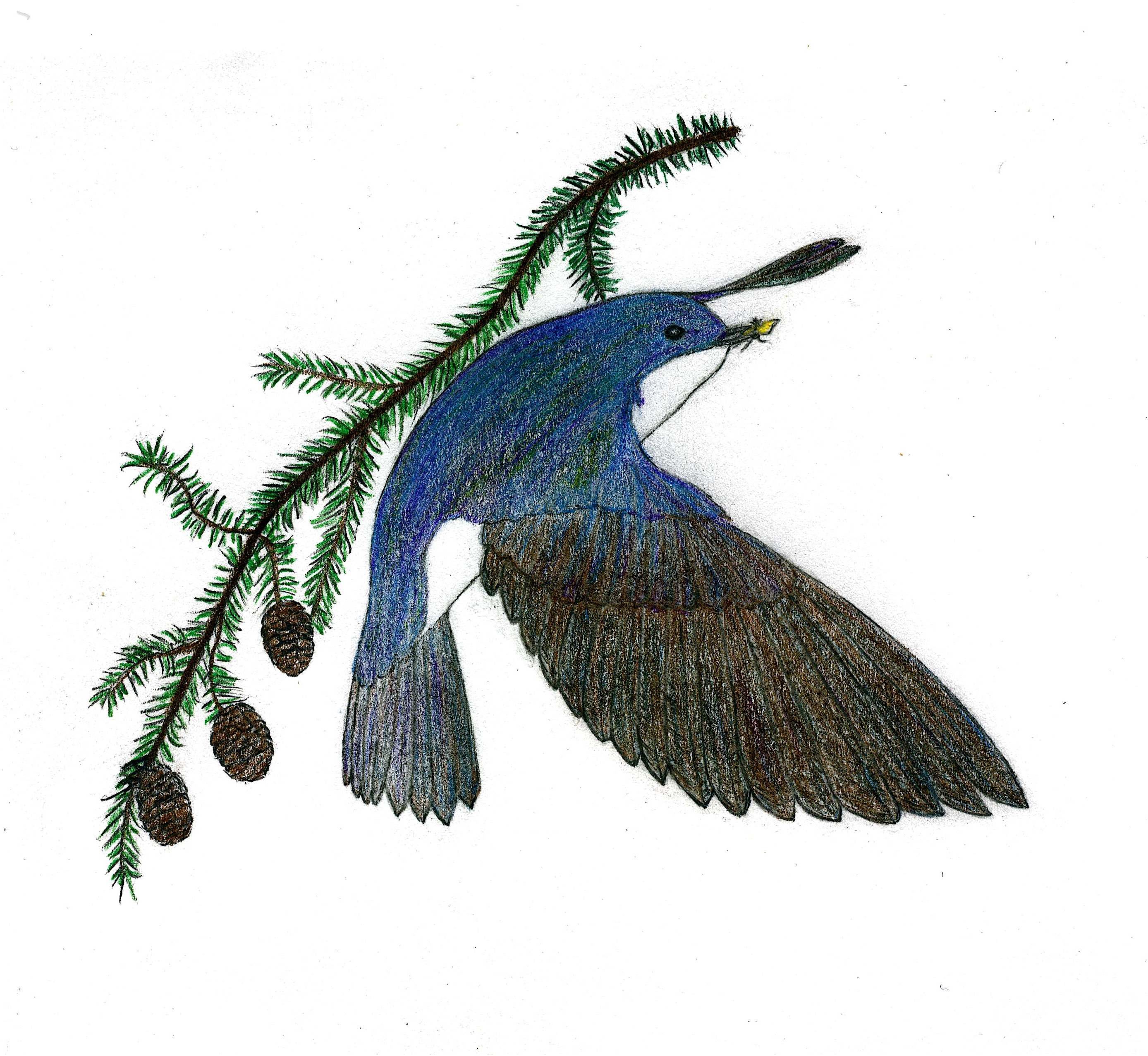Tree swallow
A bird we truly look forward to seeing return in spring is the Tree swallow. This is because it’s the one species that tells us the warm weather is here to stay. Think about why.

Tree swallows consume a lot, and I mean a lot, of insects, and won’t survive for long without them. That’s why they usually show up when the first batch of mosquitoes begins to buzz around and bother you and me. Then, all of a sudden, you’ll see these little blue and white buzz bombs darting back and forth as fast as lightning and as light as air itself to help thin the population of our worst enemies.
Tachycineta bicolor is how scientists refer to the Tree swallow. This Latin name literally means “swift moving two-colored bird,” which describes them perfectly as they sprint through the warm air in their relentless search for diminutive winged protein. There are many Yupik names for the tree swallow. One is “kauturyaraq,” which means, “one that nests in a small cavity.” The name also refers to the bank swallow who lives in a similar manner, but in the steep sides of river banks. The Yupik name I like the best, however, refers to the Tree swallow alone, and that is “equgmelnguq” (or “qugmelnguq” and “qungmelnguyaaq”), which loosely translates as the bird that “carries a beetle on its shoulder,” possibly referring to the iridescent color of its shoulders, which is the same color as that of some beetles.
During normal years Tree swallows have plenty of insects to carry home on the their shoulders, but I remember last spring just after they returned to Marshall in late April the weather turned very cold for several days and all the insects went into hiding, thus depriving the swallows of their usual food supply. But, as with wild animals everywhere, the swallows proved resilient and adapted to the change. I found out how during one of my evening walks.
It was then that I stumbled on more than a hundred of the shiny blue and white birds divebombing off the edge of the spring river ice into an open slough adjoining the Yukon River. The swallows were apparently making the best of a bad situation by flying in sorties one after the other from their perch on the ice and dipping suddenly into the slowly moving water to pick up their prize of tiny crustaceans which are abundant near the ice in spring. The birds did this for hours, day after day, and the strategy must have worked because I found no dead birds, and when the warmer weather came back the swallows returned to the village and resumed their normal lives.
As anyone knows who has watched these handsome birds in spring, the males are extremely aggressive about their nesting territories, and once they have claimed them they begin actively courting their fair ladies with fancy aerial acrobatics. The lady makes her choice based on the dazzling quality of his display.
When the feathered couple settles down to serious homemaking, the new wife builds the nest in a tree cavity or nest box on the side of your house (or even in an open mailbox at the edge of the road), sometimes helped by her consort. She lays four to six white eggs that hatch about 15 days later. Then for 16-24 days both parents work themselves anorexic trying to keep up with the noisy hunger of their altricial young, at which time the young birds fly off and begin to fend for themselves. If they are lucky they stand the chance of surviving for perhaps nine years. If they are lucky.
And so it goes with Tachycineta bicolor alias equgmelnguq . And, as always, I’ve just scratched the surface. There’s so much more to be said about the life and times of this “swift moving two-colored” bird that “carries a beetle on its shoulder.” And soon, very soon now, we’ll all be able to watch these wee winged wonders for ourselves as they dash to and fro over our heads and suddenly, perhaps, dart down right in front of our eyes and pick a mosquito off the end of our nose!


